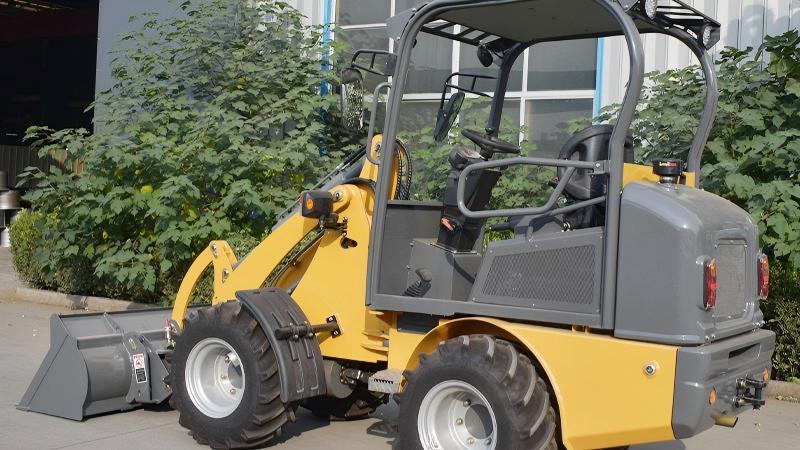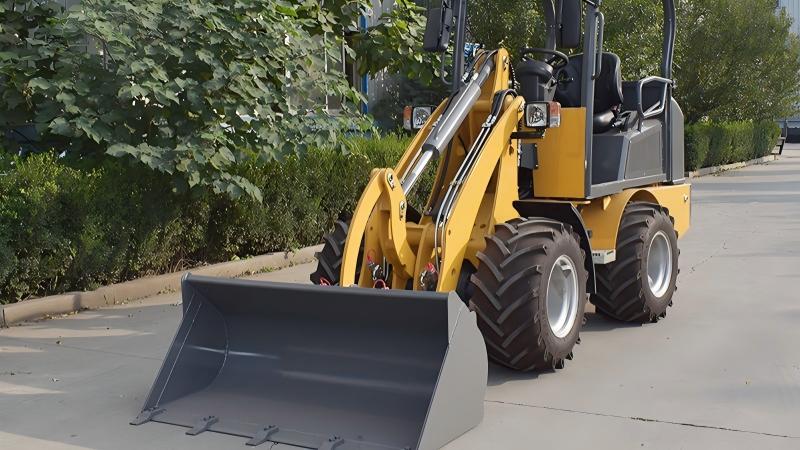The European-standard operator cab for wheel loaders represents the pinnacle of operator-centric design, blending rigorous safety regulations with unparalleled comfort and ergonomic innovation to create a productive and protected working environment. Far exceeding basic functionality, these cabs are governed by a comprehensive framework of directives and ISO standards that mandate specific levels of performance for safety, health, and machine operation. The most critical of these are the integrated Roll-Over Protective Structure (ROPS) and Falling Object Protective Structure (FOPS), which are not mere add-ons but are fundamentally engineered into the cab's core structure. In the event of a machine tip-over or an impact from debris, this reinforced cabin is designed to maintain a critical survival space for the operator, forming an indestructible safety cell. Beyond this foundational protection, the cab's construction includes enhanced glazing with laminated safety glass, strategically designed entry and egress points with anti-slip surfaces, and a pressurized interior to prevent the ingress of dust and harmful particulates. This holistic approach to physical safety establishes a secure base upon which all other comfort and efficiency features are built, ensuring the operator is shielded from the most severe hazards present on construction sites, quarries, and recycling facilities.
Within this secure shell, the ergonomic and control layout is meticulously crafted to minimize operator fatigue and maximize operational precision, which is a hallmark of the European design philosophy. The seat is not just a chair but a sophisticated, fully adjustable suspension system, often with integrated heating and ventilation, designed to isolate the operator from whole-body vibration as per ISO 2631-1 standards. The multi-function joystick controllers, which can often manage multiple hydraulic functions with single-lever precision, are positioned to allow a relaxed posture with armrest support, reducing shoulder and back strain during long shifts. The instrument cluster is typically a digital or analog display providing clear, real-time data on machine health, performance metrics, and operational status. All switches and controls are intuitively placed, logically grouped, and tactilely differentiated to allow for operation without the need for the operator to look away from the work cycle. This human-machine interface (HMI) is designed through extensive research and testing to create an intuitive flow of operation, where the machine feels like a natural extension of the operator's will, thereby enhancing both speed and accuracy in material handling tasks.
Environmental control within the cabin is treated with equal importance, transforming the operator's station into a climate-controlled oasis regardless of external conditions. A high-capacity, automatic climate control (HVAC) system is standard, capable of rapid heating and cooling while maintaining consistent air quality. This is complemented by the cab pressurization system, which creates positive internal pressure to forcefully exclude dust, a critical feature in exceptionally dusty environments like mining or demolition. Furthermore, exceptional all-around visibility is paramount, achieved through large, single-pane windows with minimal blind spots, heated and electrically adjustable mirrors, and often a front wiper system with a large sweep area. To combat auditory fatigue, European standards enforce strict internal noise level limits, often below 70 dB(A). This is accomplished through extensive sound-damping materials in the cab's walls and ceiling, vibration-isolated mounting of the entire cab structure on the machine frame, and the use of quiet-operating HVAC fans. The result is a remarkably quiet and calm environment that allows for clear communication via built-in radio systems and reduces the long-term risk of hearing damage and stress-related health issues for the operator.
In conclusion, the European-standard operator cab is a deeply integrated system where safety, ergonomics, and environmental control converge to create a superior workplace. Its defining features—the integral FOPS/ROPS safety cell, the vibration- dampening ergonomic throne, the intuitive control interfaces, the powerful climate management, and the silent, panoramic cockpit—are not isolated luxuries but interconnected components of a cohesive philosophy. This philosophy prioritizes the operator as the most critical component of the machine's productivity and efficiency. By investing in a wheel loader equipped with such a cab, fleet managers are not merely complying with stringent regulations; they are making a strategic investment in enhanced asset utilization, reduced operator turnover, lower long-term health-related liabilities, and ultimately, a more profitable and sustainable operation, proving that operator well-being is directly correlated with bottom-line performance.
Post time:Nov.17.2025



